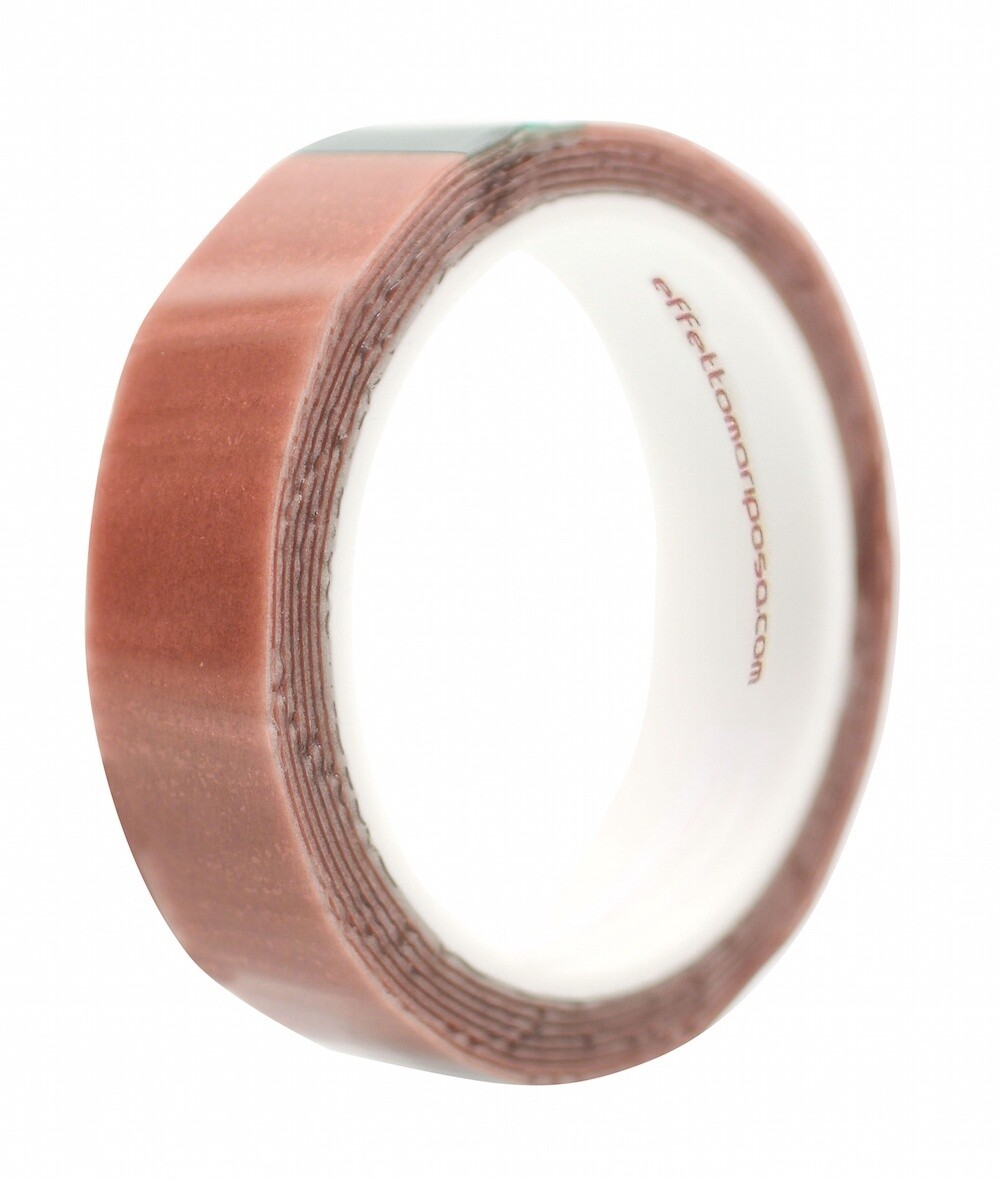Effetto Mariposa Carogna Tubular Rim Tape
Carogna
We started developing our Carogna (pronounced “car-own-ya”) double-adhesive tubular tape with a clear and ambitious goal: to bridge the gap between previously existing tapes and mastic in terms of gluing performance and heat-resistance, while retaining all the advantages of tapes.
In addition to this, we gave specific additional consideration to cyclocross and mountain-bike tubulars, where specific features are needed from the gluing standpoint.
CHARACTERISTICS:
Universal performance: Carogna has been tested and is designed to perform flawlessly on any rim material (aluminum, carbon), with any tubular (seamless, handmade, vulcanized sew-ups…), on and off-road (cyclocross, mountain bike).
Specific adhesive properties on rim and tubular: the tape has two application-specific sides:
Semi-structural and removable on the rim-side: adhesion is guaranteed by industrial-grade acrylic glue, native to the base tape; this means that when removing the tubular (breaking its bond with the rim), the acrylic glue will stay on the tape, not on the rim. Acrylic has a good adhesion on both aluminum and carbon without any specific surface preparation.
Permanent on the tubular side: there’s a 1 mm-thick layer of a recently-developed permanent glue for underwater applications. This thick glue film will move and spread when the tubular is first inflated, ensuring optimized contact with any tubular base tape geometry. Humidity is obviously not an issue, and this glue adheres well to any kind of base tape material (nylon, cotton, poly-cotton) or external finishing (raw, brushed, or coated by neoprene).
Wide temperature range: once adhesion is set, the use at low temperatures (down to -40°C) is not a problem. Thermal resistance of all materials used in the manufacture of Carogna was a high priority: Carogna will provide a perfect bonding at 150°C for extended periods (hours), exceeding the heat-resistance of even the best mastics and widely exceeding the heat-resistance of any other tubular tape.
Optimized adhesive surface: adhesion is very strong and uniform across the whole circumference of the rim for all tubulars and it is also uniform across the tubular base tape. One short-coming of tubular tape to-date has been limited adhesion at the edges of the base tape or in the center of tubulars with a raised center seam. Carogna solves these problems.
Optimal use: the ideal thermal range for application of Carogna is between 21°C and 38°C, allowing 8 hours to reach 80% of the adhesive strenght . Applying the tape below 10°C is not recommended.
We recommend cleaning surfaces using iso-propylic alcool.
See the instruction leaflet for detailed mounting instructions (click here).
Available sizes: Carogna is available in:
“S” (16,5 mm wide)
“SM” (20 mm wide)
“M” (25 mm wide) versions, one-wheel (2 m) rolls.
Shop size rolls of 16 m (for 8 wheels) are available.
Rim width: “S” is recommended for traditional/legacy tubular rims (external width up to 20 mm), “SM” for rims with external width between 21 and 24 mm, while “M” is recommended for rims with a width between 25 and 28 mm.
Why “Carogna”?
In several areas in Italy, “Carogna” (meaning: corpse in putrefaction) was the old name for tubular mastic, as mastic smells bad and is gooey. Carogna: a historical, funny name for a modern product that serves the same purpose of smelly old mastic. in a clean, fast and odorless way!!
The big question: does it work for cyclocross?
Carogna tape works for cyclocross, we’ve had in general very positive feed-back. Journalists and early adopters like Lennard Zinn of Velonews and Mike Yozell of Bicycling confirm Carogna indeed works for cx.
However, as 2015 is the first big cx season for Carogna, we’re also learning a lot from some occasional problems. It turns out that knowing the correct gluing procedure is much more important for cx than for normal road use… similarly to mastic, as an average mastic job won’t survive cyclocross applications.
Carogna glue is ‘pressure-activated’, so it bonds very strongly when it’s pushed down against the rim by the tubular pressure (for this reason, for road tubulars, we recommend inflating tubulars to their max pressure and allowing some time before riding: adhesion reaches 80% of its maximum strength after 8 hours, the optimal value of 99% after 24 hours).
The quality of the adhesion should be checked by completely deflating the tubular and gently pushing it on the side. If the tubular is still not holding, waiting longer will normally address the issue.

